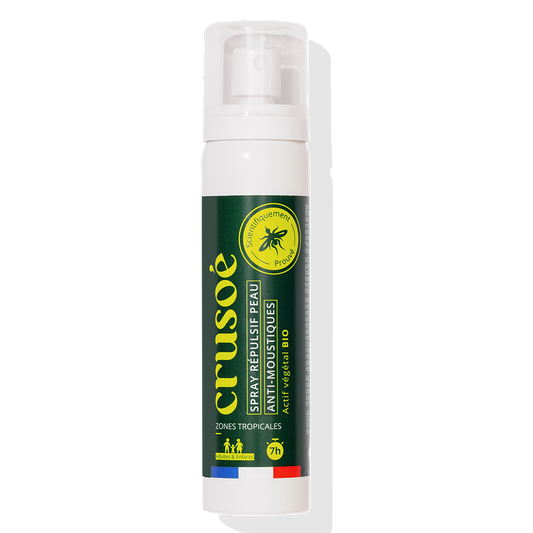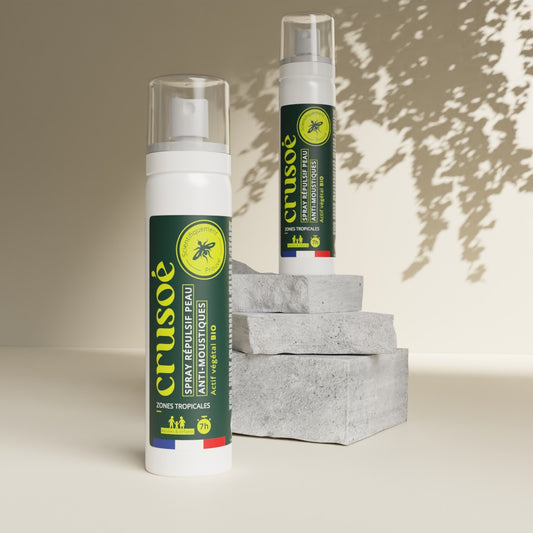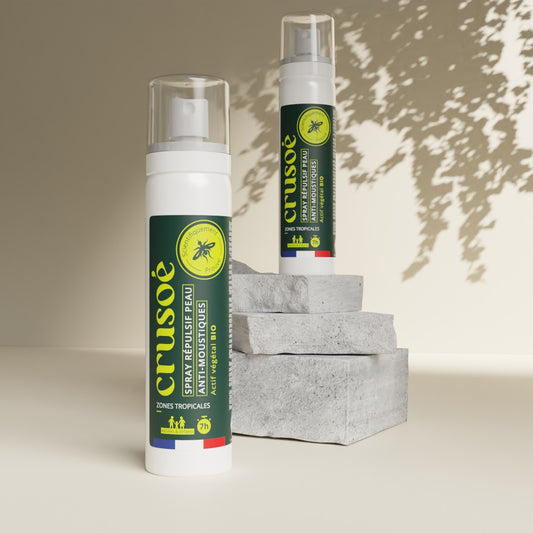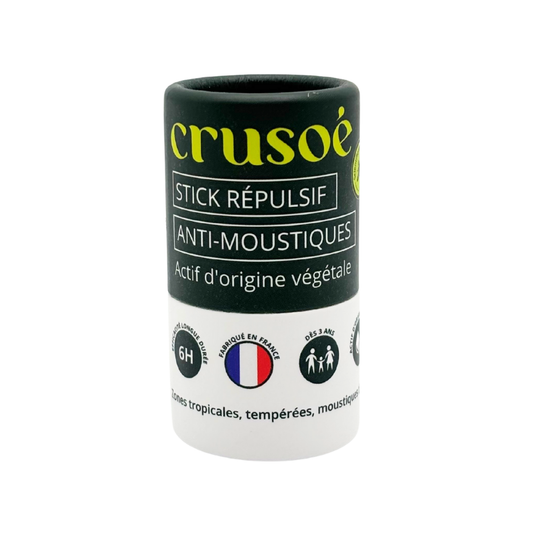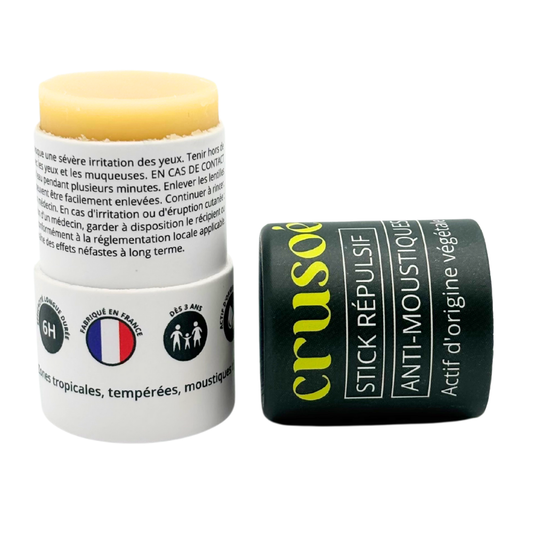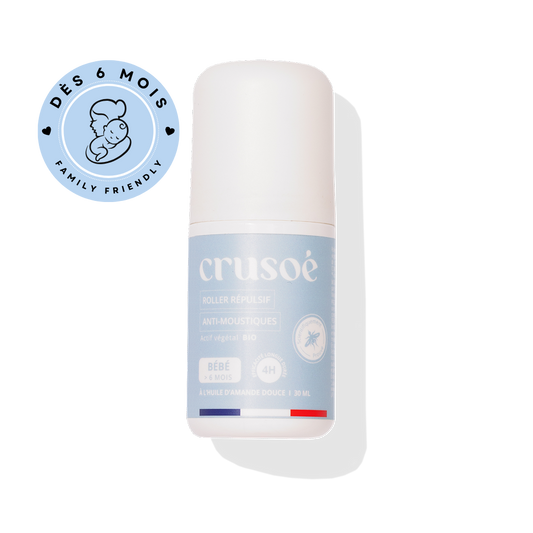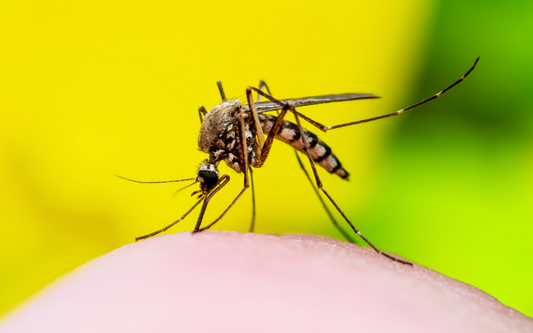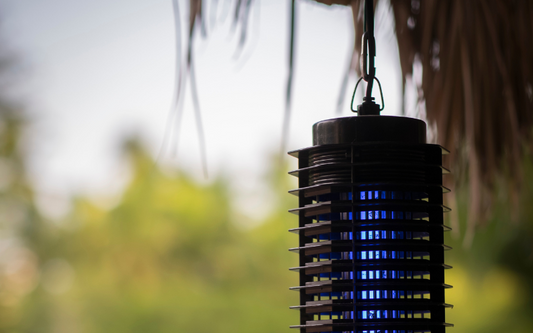What lessons can be learned from the research of the Bio-inspired Chemistry and Ecological Innovations Laboratories?
Did you know that mosquitoes can spot us up to 70m away?
The Olfactory and Gustatory System of Mosquitoes
The olfactory and gustatory system of mosquitoes is complex and highly developed . It is composed of many organs (Figure 1):
- antennae and other cephalic appendages , which are mainly intended to perceive information at a distance, that is to say odors emitted by the host , such as carbon dioxide, ammonia and carboxylic acids (lactic acid).
- the ends of its six legs , which are specialized in contact and discrimination information, that is, the taste of the host , characterized by the emanations of its skin and blood.

Figure 1 - Highlighting the olfactory and taste organs in female mosquitoes (in green)
The olfactory and taste organs work with the help of molecular sensors, called receptors. They are able to recognize a wide range of odor and taste molecules, allowing them to be classified into three categories:
- olfactory receptors (OR)
- taste receptors (GR)
- ionotropic receptors (IR).
These receptors are present in very large numbers in mosquitoes . In the tiger mosquito, for example, there are 158 OR, more than 30 GR and 102 IR. The large number of these receptors testifies to the complexity of the olfactory and taste system of mosquitoes .
Target multiple receptors to maximize repellency
Mosquito repellents target one or more of these receptors, according to molecular mechanisms that are still poorly understood. They can limit or mask the recognition of host odors, or have a repellent effect on the mosquito. 1
However, Not all active molecules in repellents target the same receptors . For example, DEET, the most widely used synthetic repellent in the world and known for its potential toxicity, deactivates the OR2 receptor, while PMD, the reference natural repellent, deactivates the OR8 receptor in Aedes aegypti , a cousin of the tiger mosquito. 2 This difference in molecular target therefore explains the difference in repulsion between the repellents.
Thus, the Bio-inspired Chemistry and Ecological Innovations (ChimEco) 3 research laboratory , at the origin of the active ingredient Crusoe, had the idea of combine different active molecules to increase the number of targeted receptors and thus increase the repellent power . With the aim of using only active ingredients of natural origin, different mixtures of active molecules were tested as a model (Figure 2A).

The addition of 5% citronellol and then 20% geraniol to PMD tripled the repellent effectiveness: 31% repellency on average for PMD alone compared to 92% on average for the mixture of the three molecules. 4
These very encouraging results led the ChimEco laboratory to develop the active ingredient of Crusoe, comprising these three key molecules from 100% plant-based resources. Crusoe shows better repellency than DEET and PMD, used at 50% of their maximum effectiveness (ED50).
Crusoe provided near-total repellency of tiger mosquitoes for 1 hour, with an average and highly reproducible efficacy of 83%, which is nearly twice as high as DEET and PMD (Figure 2 B).

Additionally, it is important to note that repeated use of single molecule repellents, such as DEET, has resulted in mosquitoes that have become resistant or insensitive. Indeed, nearly half of the species' female mosquitoes Aedes aegypti , already exposed to DEET for the first time, becomes less sensitive to it. 5
The Crusoe repellent range, being composed of a mixture of active ingredients, offers natural and effective protection with minimal risk of the emergence of resistance.
Claire Grison - Biochemistry Engineer, Doctor of Organic Chemistry and Scientific Editor
References:
[1] JT Sparks, G. Botsko, DR Swale, LM Boland, SS Patel and JC Dickens, Front. Physiol. , 2018, 9 , 1309.
[2] JD Bohbot, L. Fu, TC Le, KR Chauhan, CL Cantrell and JC Dickens, Medical and Veterinary Entomology , 2011, 25, 436–444.
[3] ChimEco - UMR5021 - CNRS/UM - Chemistry/Ecology/Ecocatalysis - Grabels, https://www.chimeco-lab.com.
[4] World Intellectual Property Organization, WO2021005204A1, 2021.
[5] NM Stanczyk, JFY Brookfield, LM Field and JG Logan, PLOS ONE , 2013, 8, e54438.
[6] Vectopôle Sud Montpellier, http://www.vectopole-sud.fr/.


